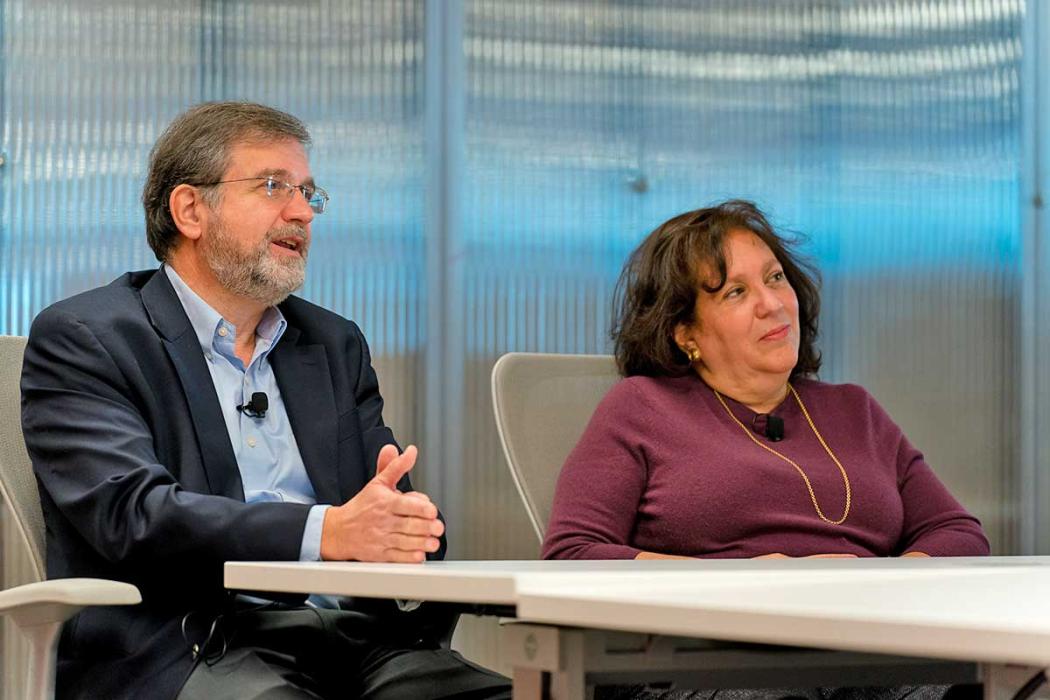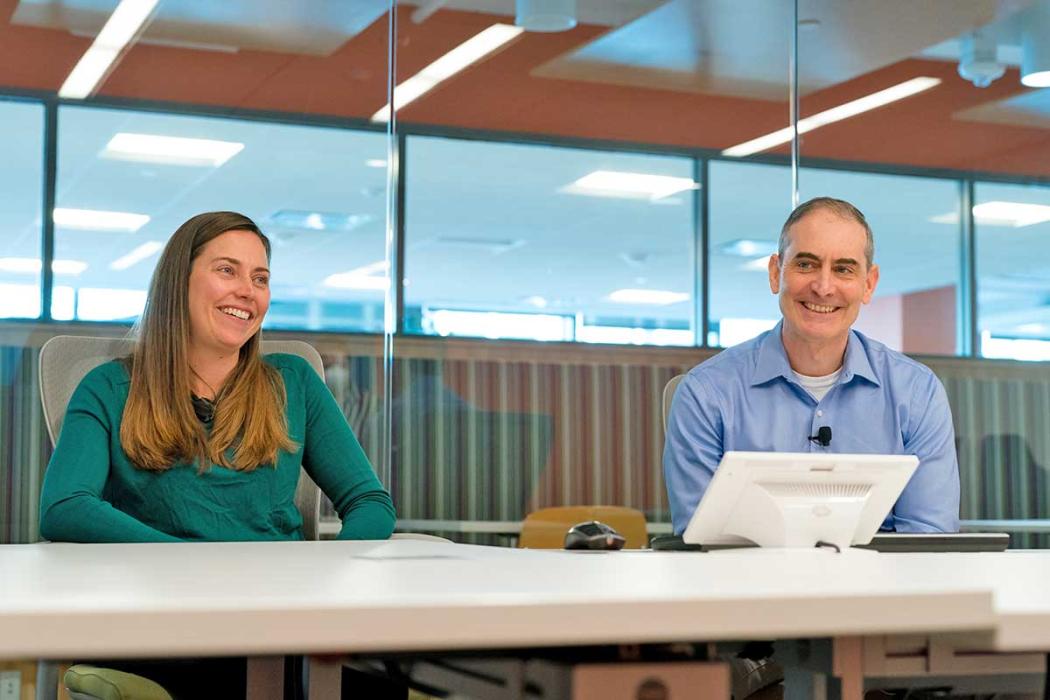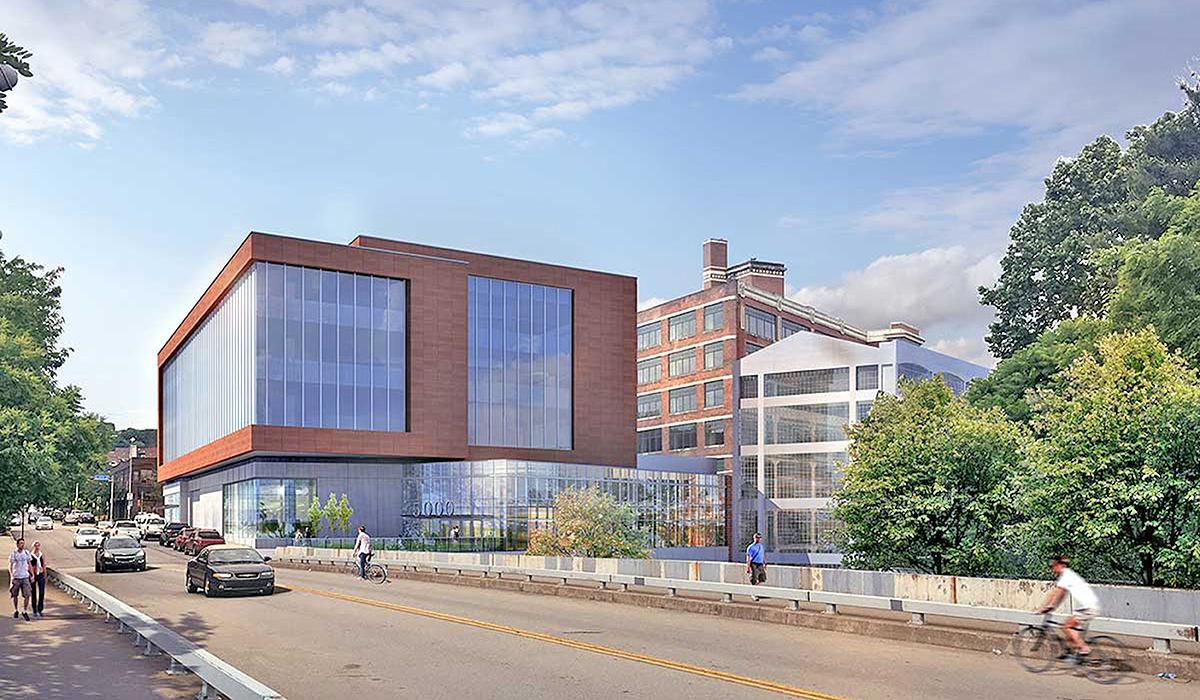
Trust & Partnership: MWBE as It Should Be
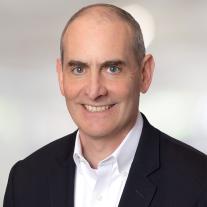
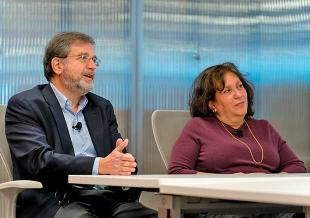
Many publicly funded projects set levels of participation for minority- and women-owned business entities (MWBEs), so often there are two consultants engaged for each design discipline. These requirements are sometimes seen as irksome by larger firms, and scope divisions can be unfair, with the MWBE firm being given less interesting pieces of the work. And with two firms instead of one, coordination can suffer.
At its best, though, collaboration between a larger firm and an MWBE can benefit both parties, as well as projects and their stakeholders. Our Washington, D.C., office has partnered with small, woman-owned structural firm A+F Engineers on more than 12 projects over 17 years. Representatives of both recently sat down to discuss their experience together.
You have a long history together. How did that start?
Mark I remember the first meeting. It was a really fast schedule, so there was concern whether or not each of the parties was going to be able to do their piece. But right off the bat, it was comfortable. We sat down with some 11-by-17 sheets and green and yellow highlighters, and that’s how we figured out who was going to do what.
Dimitrios We said, “Well, you do this, and we’ll do that,” in a way that made sense, and when we were done, it was proportionally correct to our fees. It was going so well, we even went down to the little details, like who does the scoreboard and the flagpole.
Mark And we never had to talk about it again. It was pretty amazing. Neither of us was going to let the other down.
In 2005, Mark and Dimitrios, who was working for another MBE firm, met to collaborate on the structural design for Nationals Park in Washington, D.C. In 2007, as that project was wrapping up, Dimitrios and Myranda founded A+F.
What makes the relationship work so well?
Dimitrios It clicked from the beginning. After the first discussions with Mark, we knew we were on the same page technically and we felt we could trust each other.
Mark We’ve never had an argument over fees.
Dimitrios And because we had developed this trust and this relationship, we’ve never had a gap between our scopes.
Mark One of the signs of success is when the client doesn’t know which firm you’re from.
Lisa Exactly. It takes extra communication to make that happen, but it pays off.
Myranda To succeed in that, you also need to have the same technical standards, business standards and philosophy. Thornton Tomasetti always fought for fair fees for both firms. Technology is important too. When we started A+F, we invested in compatible software, so we could work easily together.
Dimitrios How the scope is split is also important. Sometimes MWBE firms are given the foundations and that’s it. But we’ve gone back and forth. On one project, we did the superstructure and you did the below-grade work. But on the next project, we switched.
What’s the most interesting scope split you’ve done?
Lisa The Assembly in Pittsburgh. A+F owned the roof, and we owned the walls, so it was very interesting.
Dimitrios Right.
Lisa It’s a really cool building. It has a massive open space where trains could drive in. The first time I went on-site, though, that part was in bad shape, and I thought, “How is this thing still standing?” That was when they asked if we could bring in any small-business participation. It seemed like an easy thing to carve off, but we knew it would be incredibly complicated.
Dimitrios The scope was all integrated.
Lisa And when A+F did the peer review for the remainder of the building, it felt like an internal quality-control review. It was not adversarial at all.
All projects have bumps in the road. How do you deal with that?
Dimitrios Our relationship got tested many times, and we proved that we are there for each other.
Myranda And defending each other, not trying to push the blame to the other party.
Mark A lot of people like to be able to say, “Oh, that’s their problem.” We’ve been so intertwined, because many of the projects have been single buildings, that we couldn’t do that, even if we wanted to. We just needed to work together and solve the problem.
We go after complex buildings, and that’s another thing we have in common. We both like the technical challenges. That’s what makes it exciting.
How does this long-term relationship benefit both firms?
Myranda As a young company, the partnership helped us win large, interesting projects that we couldn’t get by ourselves. That was very important. And now it helps us keep our employees, because they get to do technically challenging work.
Dimitrios It also kept us going. There were periods when all we had in the office were projects we were working on together. And we built a strong portfolio, which helps when we go after new projects, alone or as a team.
Mark For us, the most significant benefit is the incredible confidence we have in the team, so we can be aggressive in going after complex projects and good fees. You don’t get that with one-off relationships. That portfolio we have together helps us win projects. We actively look for projects to work on together, knowing it’ll strengthen those benefits.
Myranda We’ve also gone to our clients and said, “If you want a national firm to team with us, this is the one.” We always feel comfortable doing this.
Any advice for how others can build similar relationships?
Mark When you find a good partner, latch onto them and don’t let go. Then you build on that, because you build momentum. Every project you do together increases that bond and that strength.
Lisa It makes you more marketable, because people don’t want you jammed together for just one project. They want to see that relationship, that you’ve worked successfully in the past.
Dimitrios Yes. We’ve had 17 exciting years, both technically and personally. We have cemented friendships, and we love that, and we’re looking forward to more to come.









